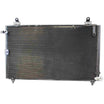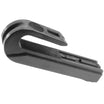Motorsports offer thrilling experiences but inherently carry significant risks. Drivers must prioritize safety equipment to mitigate these dangers. Among the most critical safety innovations in racing is the HANS (Head and Neck Support) device. This article will explore the benefits and limitations of traditional HANS devices, focusing specifically on the Simpson Hybrid S, which uniquely accommodates OEM three-point seat belts.
What is a HANS Device?
The HANS device, standing for Head and Neck Support, was invented to reduce severe head and neck injuries commonly seen in motorsport accidents. During high-speed collisions, the head’s rapid forward motion, amplified by the weight of a helmet, can lead to catastrophic injuries, such as basal skull fractures, severe whiplash, and spinal damage.
How Does a HANS Device Work?
A HANS device functions by anchoring the helmet to a supportive structure worn over the shoulders. This structure prevents excessive forward movement of the head during a crash. Without this restraint, the force of an impact can cause your head, combined with the weight of your helmet, to suddenly weigh many times its normal weight—often upwards of 40-50 kg—far beyond what the human neck can safely endure.
The HANS device redistributes the energy from an impact across the torso and shoulders, significantly lowering the risk of injury. Since becoming mandatory in professional motorsports in the early 2000s, the prevalence of fatal head and neck injuries has drastically reduced.
Limitations of Traditional HANS Devices
While highly effective, traditional HANS devices require four-, five-, or six-point racing harnesses to secure them properly. This poses a limitation for drivers using standard road-going vehicles equipped with standard three-point seat belts. Without these specialized harnesses, a traditional HANS device does not offer adequate protection.
Another common misconception about HANS devices is that they severely restrict head movement, limiting the driver’s visibility. While earlier versions of the HANS device were restrictive, modern designs allow significant head rotation, ensuring drivers can fully survey their surroundings without compromising safety.
Simpson Hybrid S: Bridging the Gap
Recognizing the limitations of traditional HANS devices, the Simpson Hybrid S offers an innovative solution designed explicitly for use with standard OEM three-point seat belts. This hybrid device incorporates a unique harness system that allows it to function effectively without the need for extensive racing setups.
Key Benefits of the Simpson Hybrid S:
-
Compatibility with Standard Seat Belts: The Hybrid S includes an integrated harness system that mimics the effectiveness of a traditional racing harness, making it suitable for everyday vehicles.
-
Freedom of Movement: Unlike older restraint systems, the Simpson Hybrid S permits significant lateral head rotation, enhancing the driver’s ability to monitor mirrors and surroundings effectively.
-
Enhanced Convenience: Its easy-to-use design allows drivers to quickly put on and remove the device, making it practical for both daily driving and occasional track use.
Safety Performance:
The Simpson Hybrid S effectively limits forward head movement during frontal collisions, substantially reducing neck strain and injury risk. Drivers wearing this device experience significantly less force exerted on their neck, minimizing both immediate injury and long-term health complications like chronic neck pain or spinal issues.
Potential Drawbacks
Despite its advantages, the Simpson Hybrid S isn’t without limitations:
-
Initial Discomfort: Some drivers initially find the device cumbersome or uncomfortable due to the added bulk around the shoulders and upper torso.
-
Cost Considerations: Quality safety gear comes at a premium. The Simpson Hybrid S can be costlier than traditional restraint systems, making it less accessible for casual enthusiasts.
-
Adjustment Period: Proper fitment and comfort require precise adjustments. An improperly adjusted device could reduce effectiveness or cause discomfort during prolonged use.
Real-World Safety Implications
Numerous motorsport accidents have demonstrated the efficacy of HANS devices. Drivers routinely credit these devices with saving their lives or significantly reducing injuries. Considering the relatively low speed needed to generate severe injuries—impact forces can multiply the weight of a helmet dramatically—the case for consistent use of the Simpson Hybrid S becomes compelling, even for enthusiasts participating in amateur track days or spirited road driving.
Encouraging Broader Adoption
Wider adoption of the Simpson Hybrid S and similar hybrid HANS devices could significantly enhance safety across all motorsport levels. Organizations and venues hosting automotive events can proactively recommend or require participants to use these devices, especially when OEM seat belts are the norm. Promoting awareness of how accessible safety solutions like the Hybrid S have become can also help reduce barriers to adoption among enthusiasts who might incorrectly assume such devices are cumbersome or incompatible with regular vehicles.
Conclusion
Safety in motorsports should never be compromised. The HANS device, particularly the Simpson Hybrid S, represents one of the most significant advancements in driver safety, capable of preventing severe head and neck injuries during accidents. By understanding both its benefits and its practical limitations, enthusiasts can make informed decisions about incorporating this life-saving technology into their driving routines. As motorsport continues to evolve, embracing devices like the Simpson Hybrid S will ensure enthusiasts can enjoy their passion safely and responsibly.




























Leave a comment
All comments are moderated before being published.
This site is protected by hCaptcha and the hCaptcha Privacy Policy and Terms of Service apply.